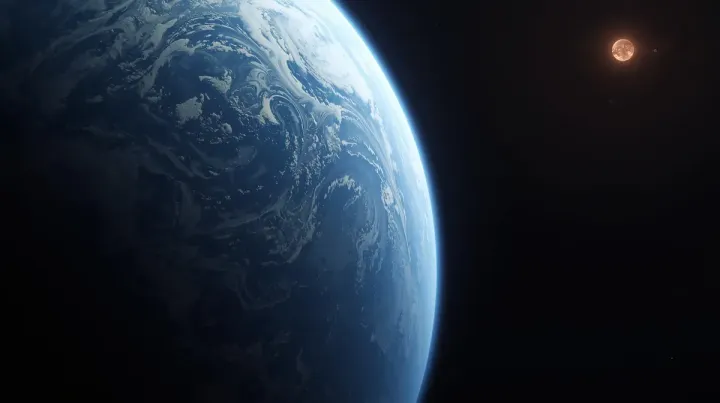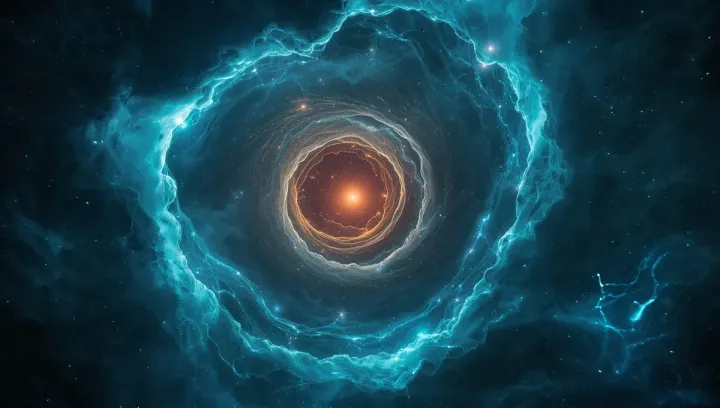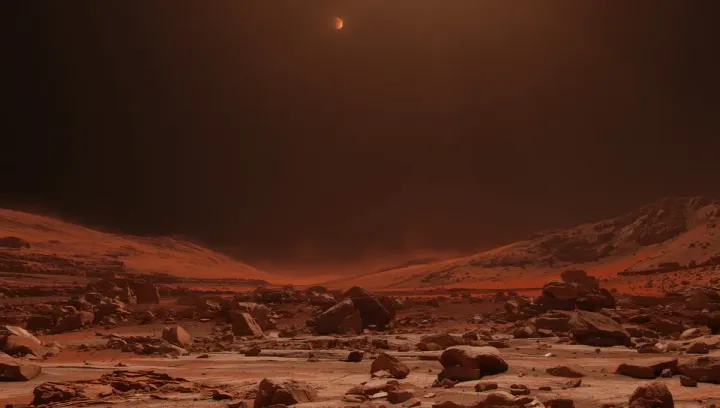
The Telescope That Isn't a Telescope: How We See Black Holes with an Earth-Sized Lens
In 2019, the world saw something that should have been impossible: a photograph of a black hole. The image of the supermassive black hole at the center of the M87 galaxy—a glowing, donut-shaped ring of light surrounding a circle of pure darkness—was a monumental achievement, a confirmation of Einstein’s theories, and a stunning piece of science.
But the image itself presents a paradox. The laws of optics are clear: to see something in high detail (to have high resolution), you need a large lens or mirror. To see something as small and as mind-bogglingly far away as the M87 black hole, astronomers calculated that they would need a telescope with a primary mirror the size of the entire planet Earth. Since building such a telescope is obviously impossible, how did they do it? The answer is one of the most ingenious and powerful tricks in modern science: if you can’t build a telescope the size of the Earth, you figure out a way to fake one. This is the magic of interferometry.
The Core Concept: Combining Light
Interferometry is a technique that has nothing to do with building a bigger physical lens. Instead, it’s about combining the light (or, in the case of the black hole photo, the radio waves) from many smaller, widely-spaced telescopes to simulate a single, giant virtual telescope.
Here’s an analogy. Imagine one person standing in a large field, trying to pinpoint the source of a faint, distant sound. They can tell the general direction, but not much else. Now, imagine a hundred people spread out across that same field, all listening to the same sound. If they all combine their information—specifically, the tiny, fractional differences in when the sound wave arrived at each person—they can reconstruct a far more detailed and precise picture of the sound’s source than any single person ever could.
Astronomical interferometry does the same thing with light waves. By combining the signals from multiple telescopes, scientists can achieve a resolution equivalent to a single telescope with a diameter equal to the largest distance between the individual telescopes in the array. This distance is called the “baseline.” The farther apart the telescopes are, the sharper the vision of the virtual telescope.
The Ultimate Example: The Event Horizon Telescope
The Event Horizon Telescope (EHT) is the project that captured the famous black hole image, and it is the ultimate example of interferometry in action. The EHT isn’t one single observatory; it’s a network of eight radio telescopes scattered across the globe, from the South Pole to Spain, from Chile to Hawaii. By linking these telescopes together, astronomers created a virtual telescope with a baseline almost as wide as the Earth itself.
The logistical challenges were immense:
- Synchronization: All eight telescopes had to observe the exact same target (the M87 black hole) at the exact same time, their observations synchronized by atomic clocks so precise they would only lose one second every hundred million years.
- The Data: The telescopes collected a colossal amount of data—around 5 petabytes, or 5,000 terabytes. This was so much information that it couldn’t be sent over the internet. Instead, it had to be physically flown on hundreds of hard drives to central processing centers at MIT in the United States and the Max Planck Institute in Germany.
- The “Image”: The EHT doesn’t produce a picture directly. The supercomputers at the processing centers don’t just “add up” the signals. They perform a complex mathematical process, comparing the data from every pair of telescopes and analyzing the interference patterns to reconstruct the final image. This incredible task was made possible by new algorithms developed by a team that included computer scientist Dr. Katie Bouman.
Beyond Black Holes: Other Heroes of Interferometry
This technique isn’t just for seeing the unseeable at the edge of a black hole. It’s a workhorse of modern astronomy.
- The Atacama Large Millimeter/submillimeter Array (ALMA): Located high in the Chilean desert, ALMA is an array of 66 high-precision radio antennas that work together as an interferometer. It produces stunningly detailed images of the dusty disks around young stars where planets are being born.
- The Very Large Telescope (VLT): Also in Chile, the VLT is composed of four massive 8.2-meter optical telescopes. While they are powerful on their own, they can also be combined to work as an interferometer, allowing astronomers to see details like the surfaces and atmospheres of distant stars.
Conclusion: A New Window to the Universe
Interferometry is one of the most powerful but least-known tools in the astronomer’s toolkit. It is a triumph of human ingenuity, a clever workaround to the physical and financial limitations of building ever-larger telescopes. It has opened a new window to the universe, allowing us to test Einstein’s theories at the edge of spacetime, watch planets form in distant solar systems, and create images that should be impossible. It lets us see the universe not just with a bigger lens, but with a bigger imagination.


